'The Forgotten Army' of WWII: D-Day 2022 spurs remembrance of 2.5M vital Allied Indian soldiers
Installation_UNREMEMBERED - Stories - Crystals from Annu Palakunnathu Matthew on Vimeo.
The Allied Normandy landing in 1944 is known as "the beginning of the end of war in Europe." But less known are the 2.5 million Indians who also played a critical role in World War II.
About the same time as the D-Day military invasion, Indian, Gurkha and African soldiers were fighting parallel battles at Kohima, in northeastern India, alongside their British colonizers. These battles were some of the most grueling campaigns of the war and turned the tide against the Japanese. The troops who fought in India and Myanmar in World War II call themselves "The Forgotten Army," as their contributions were overlooked compared with those in Europe.
But the Battle of Imphal/Kohima was chosen in 2013 as Britain’s greatest battle in its National Army Museum contest. As we commemorate D-Day, it's time we recognize the forgotten soldiers. They played a critical role in Europe, Africa and Asia and yet are barely remembered. Their history is complicated because they were fighting for their British colonizers while their homeland was fighting for independence from the same colonizer.
My own cultural history of India
Having lived in England, India and the United States gives me both an insider and outsider perspective. This has allowed me to collaborate with my subjects to tell deeply personal stories in a way that evokes empathy from an audience outside of that narrative. Visiting Yad Vashem in Israel brought the enormity of the Holocaust into perspective and that of my husband’s Jewish family’s experience. It also made me consider my own cultural history of India and its independence soon after World War II.
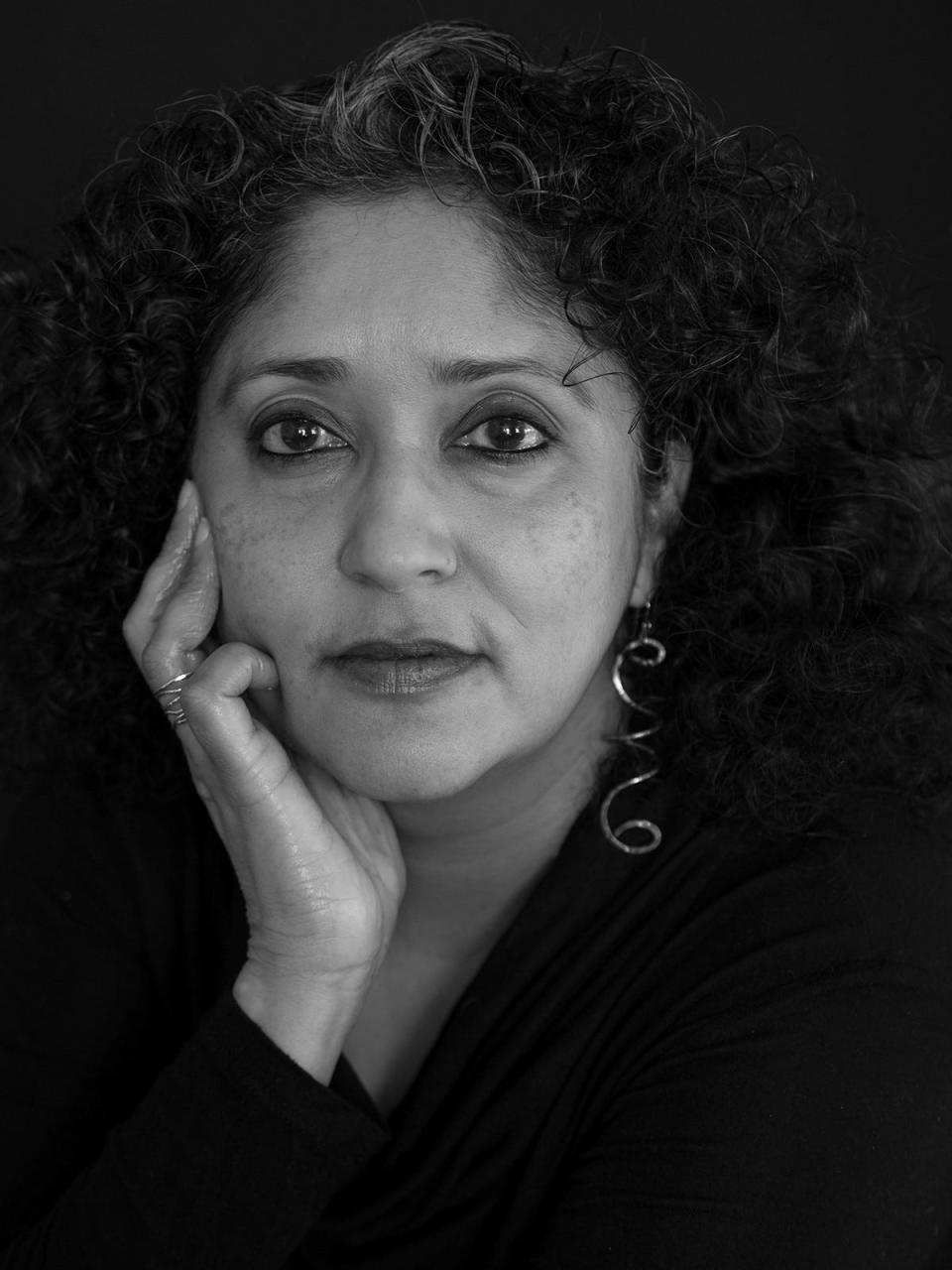
The upheaval of the 1947 Partition of British India and the violence in its wake resulted in more than 12 million refugees and left a million dead in just three months.
On my first Fulbright fellowship to India in 2012, I created artwork on the stories of the children of the Partition from both India and Pakistan. On my second Fulbright to India two years ago, I created artwork on the unremembered Indian soldiers from World War II.
Too many guns = Too much gun violence: Why can't we draw a line between these two points?
When I learned about the 2.5 million Indian volunteers, I was astounded that they appeared nowhere in our history books in India, in South Asia more broadly, or globally. These soldiers fought in all three European, North Africa and Pacific theaters and came from diverse backgrounds, low-income families all the way to royalty. Some were swashbuckling young men; others joined out of poverty, seeking a regular meal and a salary.
Since learning about these Indians who fought for the Allies, for the past five years I have focused my art on this erasure of history. The question my work addresses is, can we look beyond limited political narratives and empathize with the human stories of the Indians who fought in World War II?
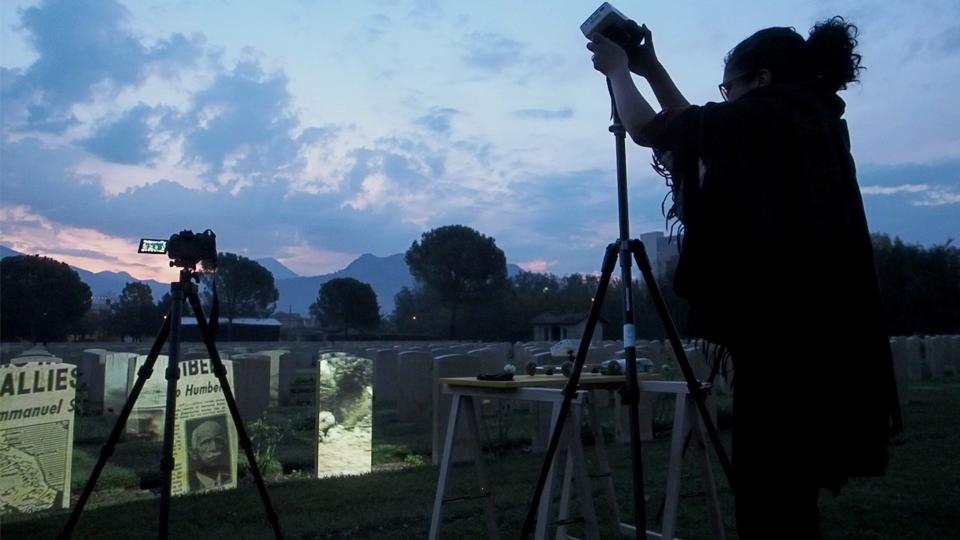
How do I address the complexity of this history in my art installations?
I prosecuted Nazis at Nuremberg: Here's how to go after Putin and his thugs.
My work on the Italian campaign was commissioned by the 2018 Kochi-Muziris Biennale, a major contemporary art festival in Asia. For this commission, I traveled to Italian cemeteries and projected the British Imperial War Museum's archival footages of Indian soldiers onto the South Asian gravestones and memorials at dawn and dusk. I then edited these recordings to create a video installation that brings forward this forgotten history.
Crowdsourcing family photos, stories
On the Kochi-Muziris Biennale's opening day on Dec. 12, 2018, my friend Yamini Nayar sent me a photograph of her grandfather, Lt. Col. Gopal Chakraborty. In it, he is posing casually in front of the Leaning Tower of Pisa in his army fatigues. The striking photograph provided an immediate face and a visceral connection to one of the 2.5 million Indian soldiers – and has led me to crowdsource and collect family photos and stories of these volunteers.
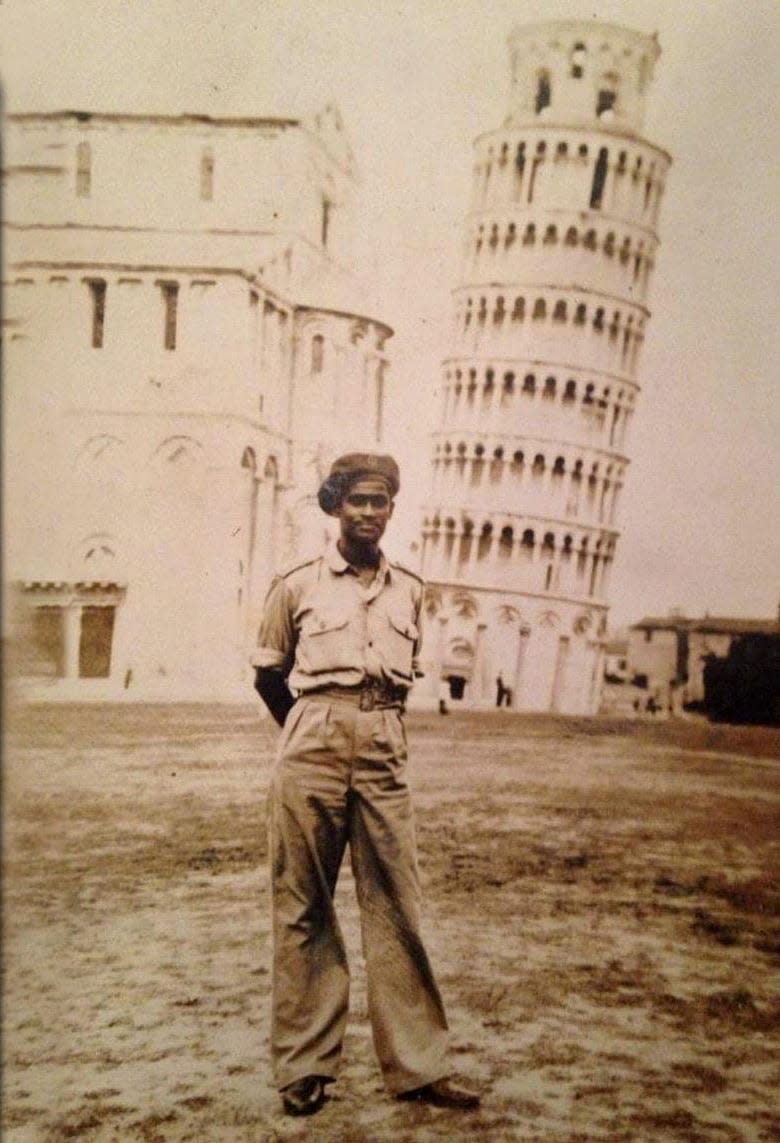
I have gathered nearly 200 poignant images and the accompanying stories of these unheralded people, men and women, who fought with the British and, by extension, the Allies.
Americans need an escape: Queen Elizabeth's Jubilee, 'Downton Abbey' movie lets us be distracted
For my recent installation, "The Unremembered: Stories of the Indian Soldiers from World War II," the edited archival footage is from all three theaters of World War II. The video is projected onto thin cotton dhotis (a garment like a sarong) with a soundscape that includes snippets of the soldiers' stories. In the exhibition space are also 3D crystals of the family photographs I collected, whose delicate images haunt the space.
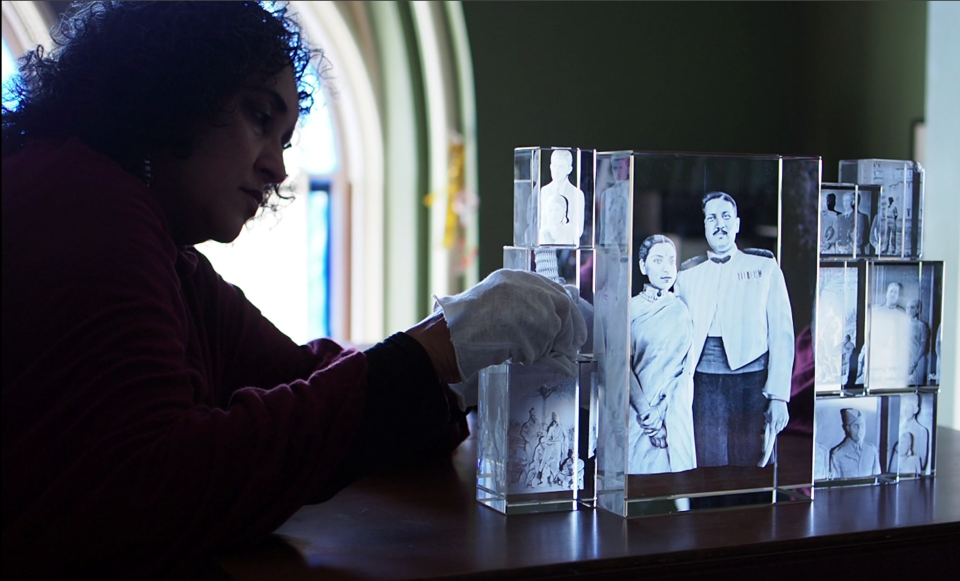
The last installation of this series consists of scrolling text projected on silhouettes of two of these Indian soldiers. The text includes the names of some of the more than 87,000 Indian soldiers who died during the war. Each line consists of their name, age, occupation, parents' name and address. The piece also acknowledges those who didn't own family photos. Some of these volunteers were sweepers, tailors and cooks from different socioeconomic backgrounds and castes, families likely too poor to have access to a camera or a photographer.
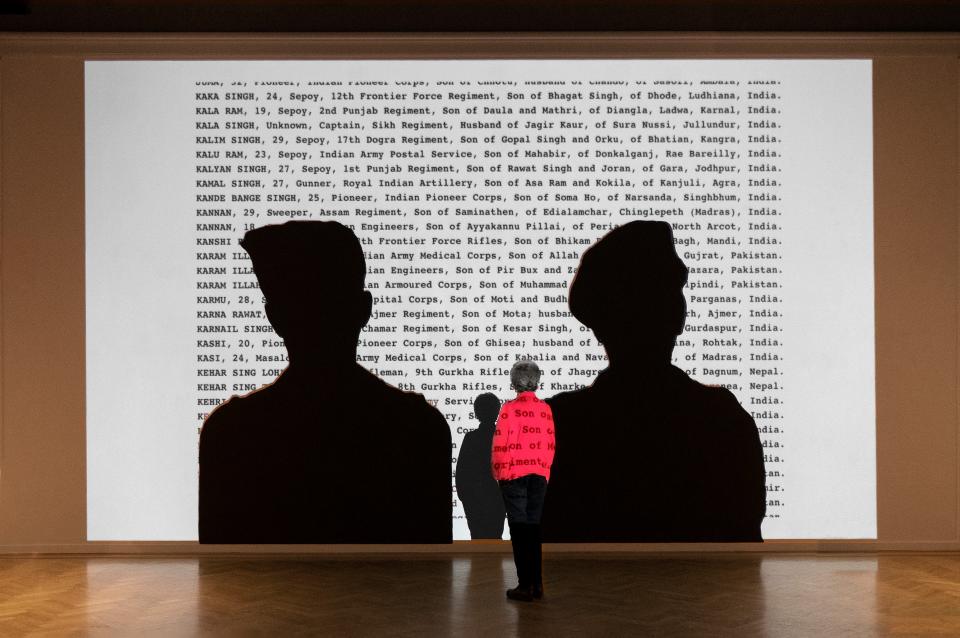
My work raises the question also of who else has not been acknowledged in established narratives of World War II.
Memorials and histories are being reevaluated and reconsidered in significant ways. Art can play a crucial role in shaping the politics of remembrance. By directing our gaze to reconsider these forgotten histories, I challenge how we have internalized a singular World War II narrative.
Photos from D-Day: Glimpse into historic World War II invasion 78 years ago
I do this so that on future D-Day remembrances, the contributions of all those involved in World War II are acknowledged, so people in South Asia and the world over will also remember the contributions of the Indian soldiers.
Annu Palakunnathu Matthew is professor of art at the University of Rhode Island. She was also the director of the URI Center for the Humanities from 2013 to 2019 and held the Silvia-Chandley Professorship for Nonviolence and Peace Studies from 2015 to 2017. Matthew’s recent solo exhibitions include the Royal Ontario Museum, Canada; Nuit Blanche, Toronto; sepiaEYE, New York; and the Newport Art Museum. Follow her on Instagram: @annumatthew
You can read diverse opinions from our Board of Contributors and other writers on the Opinion front page, on Twitter @usatodayopinion and in our daily Opinion newsletter. To respond to a column, submit a comment to letters@usatoday.com.
This article originally appeared on USA TODAY: D-Day remembrance: The Forgotten Army of Allied World War II soldiers

